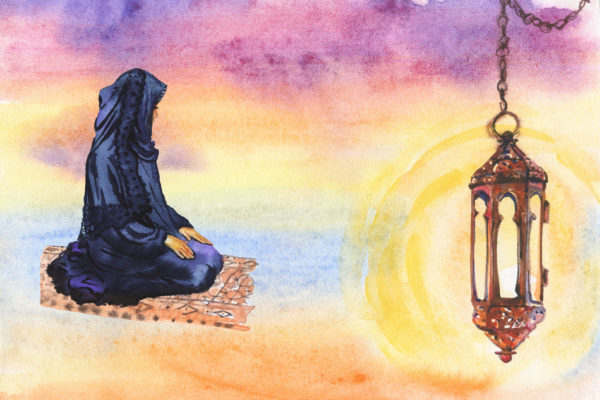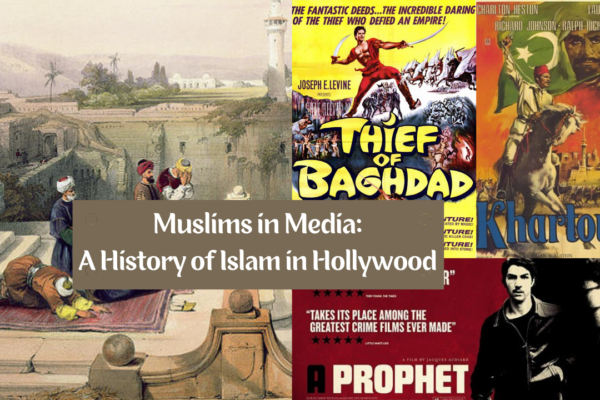The eagerness to push the narrative of young Muslim women being oppressed in film has now led to the sexualisation of Muslim children – what does this mean for us as viewers?
The eagerness to push the narrative of young Muslim women being oppressed in film has now led to the sexualisation of Muslim children – what does this mean for us as viewers?
On the 9th of September, ‘Cuties’ is scheduled to go live on Netflix – the film won an award at the Sundance Film Festival, one of the most prestigious in the world. However, when I came across the trailer, I was shocked. There was so much wrong with it that I initially struggled to structure my thoughts. Upon reflection though, the fact that Netflix is releasing it and the fact that it won this award is, unfortunately, unsurprising.
By now, you may have heard of the film, as it has sparked uproar in wider society. Why? The storyline follows an eleven-year old girl that joins a ‘twerking dance crew’, with the trailer including scenes that sexualise pre-teenage girls. Yes, you read that correctly.
Over three-hundred thousand people have signed an online petition calling for its cancellation. Further, Dawn Hawkins (executive director of the National Center on Sexual Exploitation in the United States) came out strongly against the film:
‘Cuties’ clearly sexualizes children, and in particular, girls of colour. The pornography industry is built on these stereotypes, and Netflix is taking a page from this playbook by featuring these children in such a manner. Netflix must stop this practice immediately.”
As of yet, Netflix has refused to cancel ‘Cuties’, but their marketing strategy has changed. The focus has shifted away from the ‘young girl sexually awakens’ to ‘young Muslim girl rebels against her oppressive family’.
Sound familiar?
The Muslim narrative
Within every film, messages are sent from the producers to the audience. Sometimes they are more difficult to identify but are always present. These messages combine to form an overall narrative, which is concisely articulated by the synopsis of the film. So, having established this, let’s consider the revised synopsis that Netflix produced for ‘Cuties’:
‘Eleven-year-old Amy starts to rebel against her conservative family’s traditions when she becomes fascinated with a free-spirited dance crew.’
In this case, the narrative is probably not difficult to identify. If it is not immediately clear, we can focus on some of the words used: Amy’s family are ‘conservative’, but the dance crew is ‘free-spirited’. She is ‘fascinated’ by sexual freedom but must ‘rebel’ against her religion to achieve it.
Watching the trailer, you get an even greater picture of the messages being sent:
- Young Muslim women are oppressed (usually because of their religious families)
- We (the liberated non-Muslims of the West) must help them see this
- Although we can help them, they must ultimately free themselves and ‘rebel’ against the shackles
Together, these messages form the film’s narrative about Muslim women.
Reaction
Most Muslims have responded negatively to the trailer on social media. Those defending the film claimed that this is because Muslims felt threatened by the truth of the story. If it is a Muslim man, they assume that he seeks to uphold Islam’s patriarchal oppression; if it is a Muslim woman, they assume that she doesn’t understand that she is oppressed. [For example:]
Hey @netflix, I can promise you as a Muslimah we’re good without the fake Muslim representation you’re falsifying in the media for us. No really, we appreciate the effort with “Cuties” but we beg you to move on to the next religion.
Sincerely,
The Ummah— t (@xtixq) August 21, 2020
In the trailer for Netflix #Cuties, the Muslim mother beats up the little girl, who "finds herself" by doing erotic dance.
The film is pedophile grooming and also an attack on Muslims and traditional morality.
Muslim mom in the film is literally cast as a child abuser! pic.twitter.com/urCHGIrKix
— Cernovich (@Cernovich) August 21, 2020
Unfortunately, this perspective misses the point. Many Muslims, myself included, believe there is space for a film with the aforementioned narrative. After all, some Muslim girls struggle with their religious identity in the West, before choosing to abandon it; their stories may be told in a way that captures this dilemma.
However, the credibility of the narrative has been destroyed by the fact that it is so oft-repeated. In 2019, Hala told the story of a young Muslim girl learning to masturbate before falling in love with a white classmate; of course, she had to hide this from her strict Muslim parents. Hala was also screened at the Sundance Film Festival before being released on Apple TV.
In 2018, Elite featured a young Muslim woman girl ditching the headscarf and having sexual encounters with a white man; before that point, she would only wear the headscarf in front of her strict Muslim parents. The TV series has aired for five seasons on Netflix, receiving raving reviews from most critics.
These are only two recent examples – the extended list goes on and on and on. In the words of Shelina Janmohamed, award-winning author of ‘Love in a Headscarf’:
Yawn. Muslim girl apparently frees herself by rejecting hijab and culture to be more ‘western’. Try something new next time, eh?
The “liberated from Muslim” storyline is old, cliched and Islamophobic. But what really gets me is just how lazy it is. Come on guys, do better. https://t.co/ssCQNd1rET— Shelina Janmohamed (@loveinheadscarf) August 20, 2020
Like Shelina, most Muslims are simply frustrated at the persistence of stereotypical Muslim characters and cliched narratives. Consider:
Where are the films on Muslim women empowered by their religion? Where are the films on charismatic, independent Muslim women? Where are the films on Muslim women that are architects of social change? Where are the films on non-Muslim women that find comfort in Islamic modesty?
I’d like to see a comedy-drama with two teen girls (one white, one Muslim of colour) who *put on* hijab and modest clothes in opposition to their families and in order to reject the sexism in the cultures that face them, as an act of self-liberation.
Who wants to commission me?— Shelina Janmohamed (@loveinheadscarf) August 20, 2020
Compare the lengths of your lists. The point is now evidentially clear.
Unfortunately, the biggest problem with this is that, when the ‘oppressed Muslim woman’ narrative is as authenticated as often as it is, young Muslim girls begin to absorb it as fact. Although adult Muslim women are still affected by the narrative, they can be conscious enough to largely withstand its effects. Young Muslim girls, however, are more impressionable.
In the same way that many young Muslims now associate Islam with violence, the persistence of films like these cause young Muslim girls to form negative beliefs about their own family, culture, and religion; simultaneously, they are taught to associate sexuality with freedom and white-ness with liberation.
On this point, we have another specifically disturbing issue: the ever-present ‘white (male) saviour’. When this figure is combined with the common theme of sexual awakening, there is a distinct feeling that Muslim women are being fetishised in film. This feeling is validated when we assess the alternative persistent stereotype about Muslim women: the ‘exotic harem member’ featuring in films like Aladdin and The Sheikh. Putting all of this together, the ‘fetishisation theory’ is easy to accept.
Once we frame this theory alongside this society’s cultural superiority, we can largely explain why mainstream critical responses to such films is always predictably similar: ‘brave’, ‘sensitive topic’, ‘heartfelt’, ‘liberating’ and ‘coming-of-age’.
Conclusion: The Riz Test
The uproar over this film is welcome, but criticism is limited to the sexualisation of underage girls. Even with such widespread exposure, the underlying Islamophobia is largely given a free pass.
‘Cuties’ simply perpetuates the stereotype of the ‘sexually oppressed Muslim woman (or girl, in this case)’, which is one of the Islamophobic stereotypes that persist in Western film production. The Riz Test outlines the other most pervasive ones.
Muslim women are increasingly stepping up to reclaim their narrative; but given how many of these films have come out recently, I just hope that trend continues.





